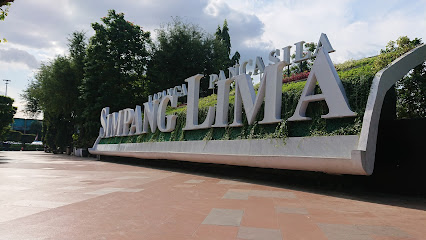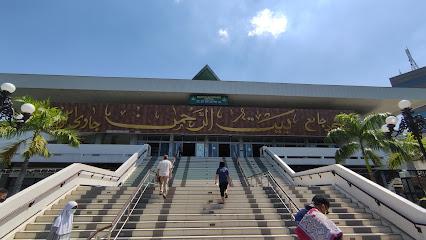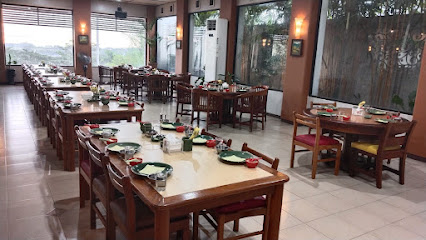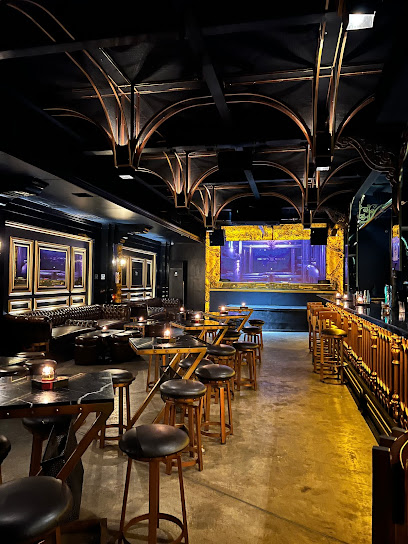
The Cultural and Historical Jewel of Semarang
Discover Semarang, Indonesia's cultural and historical gem, where Dutch colonial charm meets Javanese tradition, and vibrant street food tantalizes your taste buds.
Nestled on the northern coast of Java, Semarang is a vibrant and bustling city that offers a rich tapestry of cultural heritage, historical landmarks, and modern attractions. As the capital of Central Java, Semarang boasts a unique blend of Dutch colonial architecture and traditional Javanese culture, making it a fascinating destination for history buffs and cultural enthusiasts alike. One of the city's most iconic landmarks is the Lawang Sewu, an impressive colonial-era building that once served as the headquarters of the Dutch East Indies Railway Company. Its name, meaning 'Thousand Doors,' alludes to the numerous doors and windows that grace its façade. Visitors can explore its historic halls and learn about its storied past, which includes a period as a Japanese military headquarters during World War II. For those interested in religious and architectural wonders, the Sam Poo Kong Temple is a must-visit. This stunning Chinese temple complex, originally built in honor of the legendary Chinese Admiral Zheng He, showcases intricate carvings and vibrant red and gold hues. It's a serene spot to soak in the spiritual ambiance and appreciate the harmonious blend of Chinese and Javanese influences. Semarang is also known for its culinary delights, offering a diverse array of traditional Javanese dishes and street food. Sample local favorites like Lumpia Semarang, a savory spring roll filled with bamboo shoots, and Nasi Ayam, a flavorful chicken rice dish. The bustling Simpang Lima area is a great place to experience the city's vibrant street food scene and indulge in these delectable treats. Whether you're exploring its historical sites, savoring its culinary offerings, or simply soaking in the local culture, Semarang promises a memorable and enriching travel experience.
Local tips in Semarang
- Visit the Lawang Sewu early in the morning to avoid crowds and experience the building's serene atmosphere.
- Dress modestly when visiting religious sites like the Sam Poo Kong Temple to show respect for local customs.
- Try Lumpia Semarang from a street vendor for an authentic taste of the city's famous snack.
- Use local transportation apps like Gojek or Grab for convenient and affordable travel around the city.
- Visit Simpang Lima in the evening to enjoy the bustling nightlife and street food vendors.
Neighbourhoods in Semarang
The Cultural and Historical Jewel of Semarang
Nestled on the northern coast of Java, Semarang is a vibrant and bustling city that offers a rich tapestry of cultural heritage, historical landmarks, and modern attractions. As the capital of Central Java, Semarang boasts a unique blend of Dutch colonial architecture and traditional Javanese culture, making it a fascinating destination for history buffs and cultural enthusiasts alike. One of the city's most iconic landmarks is the Lawang Sewu, an impressive colonial-era building that once served as the headquarters of the Dutch East Indies Railway Company. Its name, meaning 'Thousand Doors,' alludes to the numerous doors and windows that grace its façade. Visitors can explore its historic halls and learn about its storied past, which includes a period as a Japanese military headquarters during World War II. For those interested in religious and architectural wonders, the Sam Poo Kong Temple is a must-visit. This stunning Chinese temple complex, originally built in honor of the legendary Chinese Admiral Zheng He, showcases intricate carvings and vibrant red and gold hues. It's a serene spot to soak in the spiritual ambiance and appreciate the harmonious blend of Chinese and Javanese influences. Semarang is also known for its culinary delights, offering a diverse array of traditional Javanese dishes and street food. Sample local favorites like Lumpia Semarang, a savory spring roll filled with bamboo shoots, and Nasi Ayam, a flavorful chicken rice dish. The bustling Simpang Lima area is a great place to experience the city's vibrant street food scene and indulge in these delectable treats. Whether you're exploring its historical sites, savoring its culinary offerings, or simply soaking in the local culture, Semarang promises a memorable and enriching travel experience.
When is the best time to go to Semarang?
Iconic landmarks you can’t miss
Lawang Sewu
Explore the historical marvel of Lawang Sewu, a captivating landmark in Semarang, rich in architectural beauty and tales from Indonesia's colonial past.

Wisata Sam Poo Kong
Immerse yourself in the tranquility and beauty of Wisata Sam Poo Kong, a stunning Buddhist temple in Semarang, Central Java.

Eling Bening
Discover Eling Bening, a breathtaking hilltop retreat in Central Java, combining stunning views with authentic Indonesian cuisine for an unforgettable experience.

Indonesia Kaya Park
Explore Indonesia Kaya Park, a serene urban oasis in Semarang, featuring lush gardens, walking paths, and vibrant local culture.

Tugu Muda Semarang
Explore Tugu Muda Semarang, a stunning historical landmark symbolizing Indonesia's fight for independence, set in a serene park perfect for relaxation.

Lapangan Pancasila Simpang Lima Semarang
Explore the enchanting Lapangan Pancasila Simpang Lima, a cultural gem in Semarang perfect for relaxation, local cuisine, and vibrant community events.

Waroeng Semawis
Discover the vibrant flavors and cultural essence of Semarang at Waroeng Semawis, an enchanting night market filled with local delicacies and entertainment.

Semarang Central Mosque
Discover the architectural splendor and cultural significance of Semarang Central Mosque, a must-see landmark in Central Java, Indonesia.

Museum Ranggawarsita
Explore the rich cultural heritage of Central Java at Museum Ranggawarsita, where history and tradition come alive.

Old Town Semarang
Explore Old Town Semarang: A historical gem filled with colonial charm, vibrant culture, and unforgettable local experiences in Central Java.

Grand Maerakaca
Experience the vibrant blend of amusement and ecology at Grand Maerakaca, Semarang's premier tourist attraction, perfect for families and nature lovers.

Pagoda Avalokitesvara
Discover the serene beauty and rich cultural heritage of Pagoda Avalokitesvara, a must-visit spiritual haven in Semarang, Central Java.

Semawis
Immerse yourself in Semawis Night Market, a vibrant hub of local flavors and cultural treasures in Semarang, Central Java, perfect for an unforgettable evening.

Museum Rekor Dunia - Indonesia
Explore Indonesia's incredible achievements at Museum Rekor Dunia, a captivating museum in Semarang showcasing the nation's remarkable records.

Marabunta Building
Explore the Marabunta Building, a historical gem in Semarang, showcasing stunning architecture and rich cultural heritage.

Unmissable attractions to see
Lawang Sewu
Explore Lawang Sewu, a captivating historical landmark in Semarang, showcasing stunning architecture and rich cultural heritage.

Wisata Sam Poo Kong
Experience the cultural richness and serene beauty of Sam Poo Kong, a historic Buddhist temple in Semarang, Central Java, Indonesia.

Indonesia Kaya Park
Discover the tranquil beauty and vibrant flora of Indonesia Kaya Park, a serene escape in the heart of Semarang, Central Java.

Marina Beach
Discover the tranquil beauty of Marina Beach in Semarang, where golden sands meet the azure waters of the Java Sea, offering unforgettable moments.

Lapangan Pancasila Simpang Lima Semarang
Discover the cultural heart of Semarang at Lapangan Pancasila Simpang Lima, where vibrant events and lush landscapes await.

Waroeng Semawis
Experience the vibrant flavors and lively atmosphere of Waroeng Semawis, Semarang's premier night market showcasing local cuisine and culture.

Waroeng Semawis
Explore the culinary delights of Waroeng Semawis, Semarang's vibrant night market, where local flavors and cultural experiences await.

Old Town Semarang
Experience the rich heritage and stunning architecture of Old Town Semarang, a captivating historical gem in Central Java.

Taman Tirto Agung
Explore Taman Tirto Agung: A lush park in Semarang offering tranquility, local cuisine, and a vibrant cultural experience for every traveler.

Museum Ranggawarsita
Discover the captivating history and culture of Central Java at Museum Ranggawarsita, a treasure trove of artifacts and art in Semarang.

Baiturrahman Grand Mosque Semarang
Discover the Baiturrahman Grand Mosque in Semarang, a stunning architectural masterpiece and a serene spiritual haven in Central Java.

Grand Maerakaca
Explore the lush landscapes and fun-filled rides at Grand Maerakaca, Semarang's premier ecological park and amusement destination.

Kampung Pelangi
Discover the vibrant colors and artistic spirit of Kampung Pelangi, a unique cultural gem in Semarang, Central Java.

Semarang - Quartier Chinois - Chinatown
Explore the rich heritage and vibrant atmosphere of Semarang's Chinatown, a must-visit destination filled with food, culture, and history.

Gereja Katedral Santa Perawan Maria Ratu Rosario Suci
Explore the breathtaking Gereja Katedral Santa Perawan Maria Ratu Rosario Suci, a stunning Gothic cathedral in Semarang, rich in history and architectural beauty.

Essential places to dine
Restoran Kampung Laut
Experience exquisite seafood dining at Restoran Kampung Laut in Semarang, where every dish is crafted from the freshest ingredients and served with stunning views.

Kedai Beringin
Experience authentic Chinese cuisine at Kedai Beringin in Semarang – a family-friendly restaurant offering delightful breakfasts and rich flavors.

Waroeng Kaligarong - Kuliner Semarang Panjaitan
Discover the authentic flavors of Indonesia at Waroeng Kaligarong, where every dish tells a story.

Spiegel All Day Bar & Dining
Discover the vibrant culinary scene at Spiegel All Day Bar & Dining in Semarang, where exquisite flavors meet a lively atmosphere.

Toko Oen
Discover Toko Oen in Semarang: An iconic restaurant serving authentic Indonesian cuisine and delightful ice creams since the colonial era.

The Tavern
Discover delectable steaks and American classics at The Tavern in Semarang—your go-to spot for great food and drinks.

Koenokoeni Cafe Gallery
Discover the fusion of art and cuisine at Koenokoeni Cafe Gallery in Semarang - where every meal is an experience.

Ikan Bakar Cianjur - Kota Lama
Discover authentic Sundanese cuisine at Ikan Bakar Cianjur - Kota Lama in Semarang City, where tradition meets flavor in every bite.

Kedai Gula Jawa
Experience authentic Javanese flavors at Kedai Gula Jawa in Semarang – where tradition meets taste.

Holliday Restaurant
Discover authentic Chinese cuisine at Holliday Restaurant in Semarang—famous for its delectable dim sum and family-friendly atmosphere.

Kimukatsu DP Mall Semarang
Discover the exquisite taste of layered katsu at Kimukatsu DP Mall Semarang - a perfect blend of tradition and flavor awaits.

D'Blasteran
Experience the best of fusion cuisine at D'Blasteran in Semarang – where traditional Indonesian flavors meet global culinary artistry.

Pesta Keboen Restoran
Experience authentic Indonesian cuisine at Pesta Keboen Restoran in Semarang - where tradition meets flavor.

Ikan Bakar Cianjur
Discover authentic Sundanese cuisine at Ikan Bakar Cianjur, where every dish tells a story of rich flavors and tradition.

Hanamasa Semarang
Discover authentic Japanese cuisine at Hanamasa Semarang – where tradition meets flavor in every bite.

Markets, malls and hidden boutiques
Pollux Mall Paragon Semarang
Experience the best shopping, dining, and entertainment at Pollux Mall Paragon Semarang, a vibrant hub in Central Java.

Mal Ciputra Semarang
Discover Mal Ciputra Semarang, a vibrant shopping mall offering diverse retail options, delightful dining, and entertainment for an unforgettable experience.

Java Supermall
Explore Java Supermall: Semarang's ultimate shopping haven with diverse stores, delicious dining, and vibrant entertainment options.

Matahari Department Store Simpang Lima Semarang
Experience the best of shopping in Central Java at Matahari Department Store, a vibrant hub for fashion, electronics, and local culture.

DP Mall Semarang
Discover a shopper's paradise at DP Mall Semarang, featuring diverse stores, delightful dining, and entertainment for an unforgettable experience.

Elizabeth Bag
Explore the stylish world of Elizabeth Bag in Semarang, where fashion meets quality in every exquisite design.

Matahari Department Store Paragon Semarang
Discover the vibrant shopping experience at Matahari Department Store in Paragon Semarang, where local culture meets modern retail.

KKV DP Mall Semarang
Discover the vibrant shopping experience at KKV DP Mall Semarang, Central Java's ultimate destination for fashion, electronics, and local delights.

H&M
Discover stylish fashion at H&M Semarang, where global trends meet local charm in a vibrant shopping destination.

Trend Shop
Experience affordable fashion at Trend Shop in Semarang, where quality meets style in the heart of Central Java.

UNIQLO DP MALL Semarang
Discover trendy apparel and stylish accessories at UNIQLO DP MALL Semarang, the ultimate fashion destination in Central Java for all ages.

Miniso paragon mall semarang
Explore the vibrant and affordable gift shop Miniso at Paragon Mall Semarang for unique souvenirs and trendy products.

3second Family Store Pandanaran
Explore the vibrant 3second Family Store Pandanaran in Semarang, where trendy apparel meets local fashion culture for every style enthusiast.

MINISO - DP Mall Semarang
Explore stylish and affordable fashion accessories at MINISO - DP Mall Semarang, where trendy meets budget-friendly shopping.

Watsons DP Mall Semarang
Explore Watsons DP Mall Semarang for a vibrant selection of beauty and health products in Central Java - where beauty meets convenience.

Essential bars & hidden hideouts
The Tavern
Experience the best of American dining in Semarang at The Tavern, where delicious food meets a vibrant atmosphere.

Sakapatat Beer Garden & Resto
Experience Semarang's vibrant culinary scene at Sakapatat Beer Garden & Resto, where delicious grills meet a lively atmosphere in a stunning garden setting.

AtoZ Bar Wine & Brasserie
Discover the perfect blend of fine wines and exquisite dining at AtoZ Bar Wine & Brasserie in Semarang, where culinary excellence meets vibrant ambiance.

Bleusky Lounge Sky Bar
Discover breathtaking views and delectable grilled delights at Bleusky Lounge Sky Bar in Semarang, a perfect blend of ambiance and culinary excellence.

Wishbone Bar
Discover the vibrant nightlife at Wishbone Bar in Semarang, featuring innovative cocktails and a lively atmosphere that captivates every visitor.

RED HARE BAR
Experience the vibrant nightlife of Semarang at Red Hare Bar, where exquisite drinks, delicious food, and an electrifying atmosphere await.

Wolfpack Pub & Resto
Experience the ultimate sports bar atmosphere at Wolfpack Pub & Resto in Semarang, where delicious food and vibrant entertainment await.

AZYX BEERHOUSE
Explore the vibrant AZYX Beerhouse in Semarang, where local and imported beers meet delicious dining in a cozy beer garden atmosphere.

On On Pub
Discover the lively On On Pub in Semarang - a perfect blend of great food, drinks, and sports entertainment in a welcoming atmosphere.

Brown Sugar Semarang
Experience the vibrant nightlife of Semarang at Brown Sugar, where delicious cocktails and live music create unforgettable memories.

POTS Bar
Experience the vibrant nightlife at POTS Bar, Semarang's premier destination for cocktails, live music, and a lively atmosphere.

HW Livehouse Semarang
Unwind at HW Livehouse Semarang, where vibrant nightlife meets an inviting lounge atmosphere, perfect for drinks and live music.

COLLINS BAR SEMARANG
Experience the vibrant nightlife of Collins Bar Semarang, where great drinks and a lively atmosphere await you in Central Java.

Butterfly Lounge & Bar Semarang
Discover the tranquility of Butterfly Lounge & Bar in Semarang, where exquisite drinks and a serene ambiance await every visitor.

The Rose Bar & Kitchen
Experience the vibrant nightlife and exquisite dining at The Rose Bar & Kitchen, Semarang's culinary hotspot for locals and tourists alike.

Local Phrases
-
- HelloHalo
[ha-lo] - GoodbyeSampai jumpa
[sam-pai jum-pa] - YesYa
[ya] - NoTidak
[ti-dak] - Please/You're welcomeSilakan
[si-la-kan] - Thank youTerima kasih
[te-ri-ma ka-sih] - Excuse me/SorryMaaf
[ma-af] - How are you?Apa kabar?
[a-pa ka-bar] - Fine. And you?Baik. Dan kamu?
[ba-ik. dan ka-mu] - Do you speak English?Bisa bicara bahasa Inggris?
[bi-sa bi-ca-ra ba-ha-sa ing-gris] - I don't understandSaya tidak mengerti
[sa-ya ti-dak men-ger-ti]
- HelloHalo
-
- I'd like to see the menu, pleaseSaya ingin melihat menu, tolong
[sa-ya in-gin me-li-hat me-nu, to-long] - I don't eat meatSaya tidak makan daging
[sa-ya ti-dak ma-kan da-ging] - Cheers!Selamat!
[se-la-mat] - I would like to pay, pleaseSaya ingin membayar, tolong
[sa-ya in-gin mem-ba-yar, to-long]
- I'd like to see the menu, pleaseSaya ingin melihat menu, tolong
-
- Help!Tolong!
[to-long] - Go away!Pergi!
[per-gi] - Call the Police!Panggil polisi!
[pang-gil po-li-si] - Call a doctor!Panggil dokter!
[pang-gil dok-ter] - I'm lostSaya tersesat
[sa-ya ter-se-sat] - I'm illSaya sakit
[sa-ya sa-kit]
- Help!Tolong!
-
- I'd like to buy...Saya ingin membeli...
[sa-ya in-gin mem-be-li...] - I'm just lookingSaya hanya melihat-lihat
[sa-ya han-ya me-li-hat-li-hat] - How much is it?Berapa harganya?
[be-ra-pa har-ga-nya] - That's too expensiveItu terlalu mahal
[i-tu ter-la-lu ma-hal] - Can you lower the price?Bisa kurangi harganya?
[bi-sa ku-rang-i har-ga-nya]
- I'd like to buy...Saya ingin membeli...
-
- What time is it?Sekarang jam berapa?
[se-ka-rang jam be-ra-pa] - It's one o'clockJam satu
[jam sa-tu] - Half past (10)Setengah (sepuluh)
[se-ten-gah (se-pu-luh)] - MorningPagi
[pa-gi] - AfternoonSore
[so-re] - EveningMalam
[ma-lam] - YesterdayKemarin
[ke-ma-rin] - TodayHari ini
[ha-ri i-ni] - TomorrowBesok
[be-sok] - 1Satu
[sa-tu] - 2Dua
[du-a] - 3Tiga
[ti-ga] - 4Empat
[em-pat] - 5Lima
[li-ma] - 6Enam
[e-nam] - 7Tujuh
[tu-juh] - 8Delapan
[de-la-pan] - 9Sembilan
[sem-bi-lan] - 10Sepuluh
[se-pu-luh]
- What time is it?Sekarang jam berapa?
-
- Where's a/the...?Dimana ada/ada...
[di-ma-na a-da/a-da...] - What's the address?Alamatnya apa?
[a-la-mat-nya a-pa] - Can you show me (on the map)?Bisa tunjukkan saya (di peta)?
[bi-sa tun-juk-kan sa-ya (di pe-ta)] - When's the next (bus)?Kapan yang berikutnya (bis)?
[ka-pan yang be-ru-tu-nya (bis)] - A ticket (to ....)Tiket (ke ....)
[ti-ket (ke ....)]
- Where's a/the...?Dimana ada/ada...
History of Semarang
-
Semarang was founded in the 9th century and initially served as a small village by the name of Pragota. It was located by the Java Sea, which would later become a significant factor in its development as a bustling port town. The town's name was eventually changed to Semarang, derived from the Javanese words 'asem' and 'arang', which mean 'scarce tamarind'.
-
The introduction of Islam to Semarang occurred in the 15th century through the efforts of Sunan Pandanaran, one of the Wali Songo, the nine saints who spread Islam across Java. The city became an important center for Islamic learning and culture, which is still evident today in its many mosques and Islamic schools.
-
In the 17th century, Semarang came under the control of the Dutch East India Company (VOC). The VOC established Semarang as a major trading hub, constructing fortifications and infrastructure to facilitate trade. This period saw significant economic growth but also introduced European architectural styles that are still visible in the Old Town (Kota Lama) area.
-
During World War II, Semarang was occupied by Japanese forces from 1942 to 1945. The occupation period was marked by hardships and resistance from local populations. The city’s infrastructure and daily life were significantly impacted, leading to a period of reconstruction after the war.
-
Following Indonesia's declaration of independence in 1945, Semarang underwent a transformation. The city became a provincial capital, fostering political, educational, and cultural growth. Modern developments have seen the rise of new business districts, while efforts to preserve historical sites have maintained the city's rich cultural heritage.
-
Semarang is known for its diverse cultural influences, including Javanese, Chinese, Dutch, and Arab communities. The city hosts numerous cultural festivals and events such as the Dugderan Festival, which celebrates the Islamic holy month of Ramadan, and the Semarang Night Carnival, showcasing local traditions, music, and dance.
-
Semarang is home to a blend of architectural styles. The Old Town (Kota Lama) features colonial buildings like the Lawang Sewu, a historic railway building. The Sam Poo Kong Temple, a legacy of Chinese admiral Zheng He, and the Great Mosque of Central Java reflect the city’s religious and cultural diversity.
Semarang Essentials
-
Semarang is served by Ahmad Yani International Airport (SRG), which has domestic flights from major Indonesian cities and some international routes. From the airport, you can take a taxi or a ride-hailing service to reach the city center. Alternatively, Semarang is accessible by train from Jakarta, Surabaya, Bandung, and other cities. The main train station is Semarang Tawang Station. Buses also connect Semarang to various parts of Java.
-
Semarang has a variety of transportation options. For short distances within the city, you can use taxis, ride-hailing services, or becak (pedicabs). There are also public buses and minibuses (angkot) for affordable travel. For sightseeing, renting a car or a motorbike can be convenient. Semarang also has a BRT (Bus Rapid Transit) system known as Trans Semarang, which covers major routes across the city.
-
The official currency in Semarang is the Indonesian Rupiah (IDR). Credit and debit cards are widely accepted in hotels, restaurants, and malls, but it's advisable to carry cash for small purchases and in more remote areas. ATMs are readily available throughout the city. Currency exchange services can be found at the airport, hotels, and authorized money changers.
-
Semarang is generally safe for tourists, but like any city, it's important to stay vigilant. Avoid walking alone at night in poorly lit areas. Petty crime, such as pickpocketing, can occur in crowded places like markets and public transport. Areas with higher crime rates targeting tourists include around the Old Town (Kota Lama) and Simpang Lima. Always keep an eye on your belongings and avoid displaying valuables.
-
In case of emergency, dial 112 for general emergencies or 110 for police assistance. Semarang has several hospitals and clinics, including Kariadi Hospital (RSUP Dr. Kariadi) for medical emergencies. Pharmacies are widely available for minor health issues. It is recommended to have travel insurance that covers medical emergencies. The nearest police station or embassy/consulate can assist in more serious situations.
-
Fashion: Do dress modestly, especially when visiting religious sites. Avoid wearing revealing clothing. Religion: Do respect local customs and traditions. Always remove your shoes before entering mosques. Public Transport: Do be respectful and give up your seat to elderly passengers. Don't eat or drink on public transport. Greetings: Do greet people with a smile and a slight bow. A handshake is also common. Eating & Drinking: Do try local delicacies and accept food offerings graciously. Don't refuse hospitality, as it is considered impolite.
-
To experience Semarang like a local, visit the traditional markets such as Pasar Johar for fresh produce and local goods. Don't miss the chance to try Lumpia Semarang, a local culinary specialty. Engage with locals, who are generally friendly and willing to share insights about their city. Explore the Dutch colonial architecture in Kota Lama and visit Sam Poo Kong Temple. For a unique experience, take a walk along Semarang's waterfront during sunset.
Trending Landmark in Semarang
Nearby Cities to Semarang
-
Things To Do in Yogyakarta
-
Things To Do in Surabaya
-
Things To Do in Bandung
-
Things To Do in Jakarta
-
Things To Do in Bali
-
Things To Do in Poon Saan
-
Things To Do in Settlement
-
Things To Do in Flying Fish Cove
-
Things To Do in Drumsite
-
Things To Do in Greta Beach
-
Things To Do in Kuching
-
Things To Do in Balikpapan
-
Things To Do in Makassar
-
Things To Do in East Coast Park
-
Things To Do in Sentosa

















